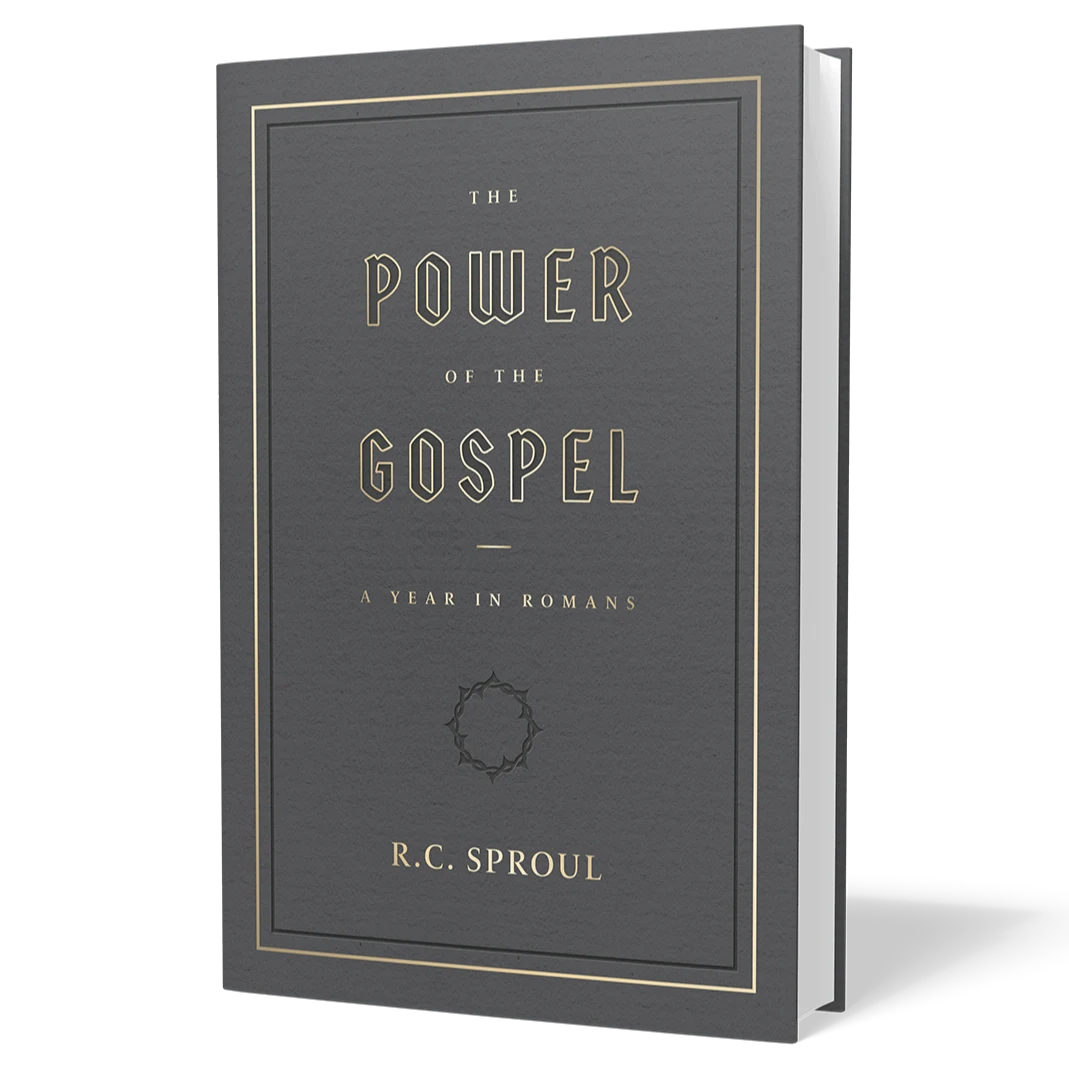John Murray, with good reason, argues that obedience is the most inclusive concept available to us for describing the redeeming work of Christ (Redemption Accomplished and Applied, p. 19). Other categories such as sacrifice and satisfaction cover some of the data, but obedience is by far the most comprehensive.
It is also, of course, utterly biblical. Christ came pre-eminently as the Servant, in fulfillment of Isaiah’s prophecy (especially Isa. 52:13–53:12). In accordance with this, He saw Himself as one who had come not to do His own will, but the will of the Father who had sent Him; and at the end of His life His claim was simply that He had finished the work given Him to do (John 17:4).
Similarly, the apostle Paul defines the kenosis of Christ as consisting precisely in His taking the form of a servant (Phil. 2:7). As such, His very dying was an act of obedience (Phil. 2:8).
The same framework underlies the Christ-Adam analogy in Romans 5, where the fundamental contrast is between the disobedience of the first man and the obedience of the last man: “for just as through the disobedience of the one man the many were made sinners, so also through the obedience of the one man the many will be made righteous.” (Rom. 5:19).
The life of Christ was clearly one of sustained, flawless, and consistent obedience. This is more than mere sinlessness. It is a dynamic thing. At every point Christ rendered to the Father joyful and creative obedience: the obedience of a perfect and costly love.
It is this righteousness of Christ that is imputed to us and becomes the ground of our justification. We become the righteousness of God in Him (2 Cor. 5:21). We must not dilute the meaning of this. All our sinfulness was imputed to Him; all His righteousness is imputed to us. He took our guilt; we acquired His righteousness. We must also take the phrase “of God” with total seriousness. We are righteous with the righteousness of God the Son; as righteous as God Himself; or, as William Cunningham once memorably put it, we are righteous with “the righteousness which God’s righteousness requires him to require” (quoted in Hugh Martin, The Atonement, p. 203).
Later theologians fine-tuned the idea of Christ’s obedience by drawing a distinction between the active and the passive obedience of Christ. The distinction was already current at the time of the Reformation and was taken for granted by such Protestant doctors as Wollebius and Turretin. In itself it is clear enough: the passive obedience of Christ is His suffering on the cross; His active obedience is His performing all the duties required by the Law.
But the distinction carries two dangers if pressed too far.
The first is our tendency to see Christ on the cross as being purely passive; as if, there, He was simply a victim, letting things be done to Him, renouncing control and reducing Himself to a state of total helplessness. This is an utterly false picture. The cross was not merely the climax of Jesus’ suffering. It was the climax of His obedience. Christ is supremely active at, and on, the cross. He obeyed even to the extent of dying. No one took His life from Him. He laid it down of His own accord, actively and voluntarily, in response to the commandment He had received from the Father (John 10:18).
This is why we say Christ was alive in dying, ministering to the thief on the cross, ministering to His mother, repelling temptation and persevering unfalteringly in His love to the Father and in His love to His own. He was alive when He died, shouting with a loud (“great”) voice before imperiously dismissing His spirit. “His dying,” wrote Hugh Martin, “was his grandest doing” (The Atonement, p. 99).
The second danger that can arise from pressing the distinction too far between the active and the passive obedience of Christ is that it tempts us to apportion different aspects of redemption to different aspects of the obedience, as if we could say, “His passive obedience secured this; His active obedience secured that.” Some theologians argued, for example, that it was the passive obedience of Christ (His endurance of the punishment due to our sin) that secured our forgiveness, whereas it was His active obedience that secured eternal life.
No less a figure than A. A. Hodge (The Confession of Faith, p. 150) attempted to read this analysis into the language of the Westminster Confession itself. The language of the Confession (chap. 8.5) is as follows: “The Lord Jesus, by his perfect obedience and sacrifice of himself … hath fully satisfied the justice of his Father; and purchased not only reconciliation, but an everlasting inheritance in the kingdom of heaven.” Hodge comments: “The sufferings of Christ secure the remission of the penalty; and by his active obedience he purchases a right to life and eternal blessedness.” (p. 150)
It is safer to take the position of Calvin (Institutes 2.16.5) that Christ both reconciled us to God and secured our righteousness by “the whole course of his obedience.” For, he continues, “From the moment he put on the person of a servant, he began to pay the price of liberation for our redemption.” His whole life was an act of atonement.
This was the position taken by our later magisterial theologians such as Turretin and Cunningham. We have to interpret the work of Christ holistically, insisting that both what Christ did and what Christ suffered bear equally on our forgiveness and on our acceptance, “without any specification of the distinct places or functions which his passive and active obedience hold on the matter” (Cunningham, The Reformers and the Theology of the Reformation, p. 405)
This obedience of Christ had manifold consequences. It expiated sin, it propitiated God, it satisfied justice and it redeemed the Church. These have all been given due emphasis in Reformed theology. We have done less than justice, however, to another key biblical concept: victory. Yet it is in such terms that the Scriptures first introduce Christ. The seed of the woman would conquer the seed of the serpent (Gen. 3:15).
This idea of victory is central to the New Testament’s understanding of the work of Christ. According to Colossians 2:15, for example, Christ disarmed the powers and authorities, made a public spectacle of them, and triumphed over them by the cross. According to Hebrews 2:14, He destroyed the one who holds the power of death; and according to Revelation 20:1–3 He has seized Satan, bound him with a great chain, thrown him into the abyss, and locked and sealed it. Once he held the Gentiles in the grip of total spiritual blindness. Now he holds them no more. The prince of this world has been driven out (John 12:31), Christ reigns, and the slaughtered Lamb is in the midst of the Throne. The kingdom has come.
There is an obvious appeal in the idea that it was Christ’s active obedience that secured His victory, but it is perilous even to venture on this kind of distribution. While it is true that in such passages as Philippians 2:9 God is said to exalt Him precisely in response to His obedience, that obedience itself is instantly defined by His death: He was obedient even to the point of dying. Was that active or passive? In Hebrews 1:3 it is precisely because He had expurgated sin that He sat down, triumphant, at the right hand of the Majesty in heaven. Most eloquent of all is the testimony of Hebrews 2:14: It was “ by death” that He destroyed the one who had the power of death. The cross became the instrument of His almightiness. The Lamb conquered by His blood.
One final note of warning. It has sometimes been argued that since Christ in His active obedience fulfilled the Law in our place, we are therefore exempt from the obligation to fulfill it for ourselves. This is the logic of antinomianism, but it is, surely, the logic of the Pit. Sin is lawlessness (1 John 3:4), and to live without law would be to live in sin. Christ did not serve and obey so that we should live lawless lives. Every theological line points in the opposite direction. Christ’s obedience is set in the context of God’s eternal determination to conform us to the image of His own Son, the obedient, self-denying Servant (Rom. 8:29); far from Christ dying so that we should be exempt from the Law, the very reason He bore the condemnation due to our sin was that we should fulfil the righteousness of the Law (Rom. 8:4); the sprinkling of His blood is linked indissolubly to obedience (1 Peter 1:2); and the fact of redemption is linked equally indissolubly to the ministry of the Spirit (Gal. 3:14), who ensures that we shall not fulfil the works of the flesh (Gal. 5:16).
We love Him because He loved us to death; and love is the fulfilling of the Law.


